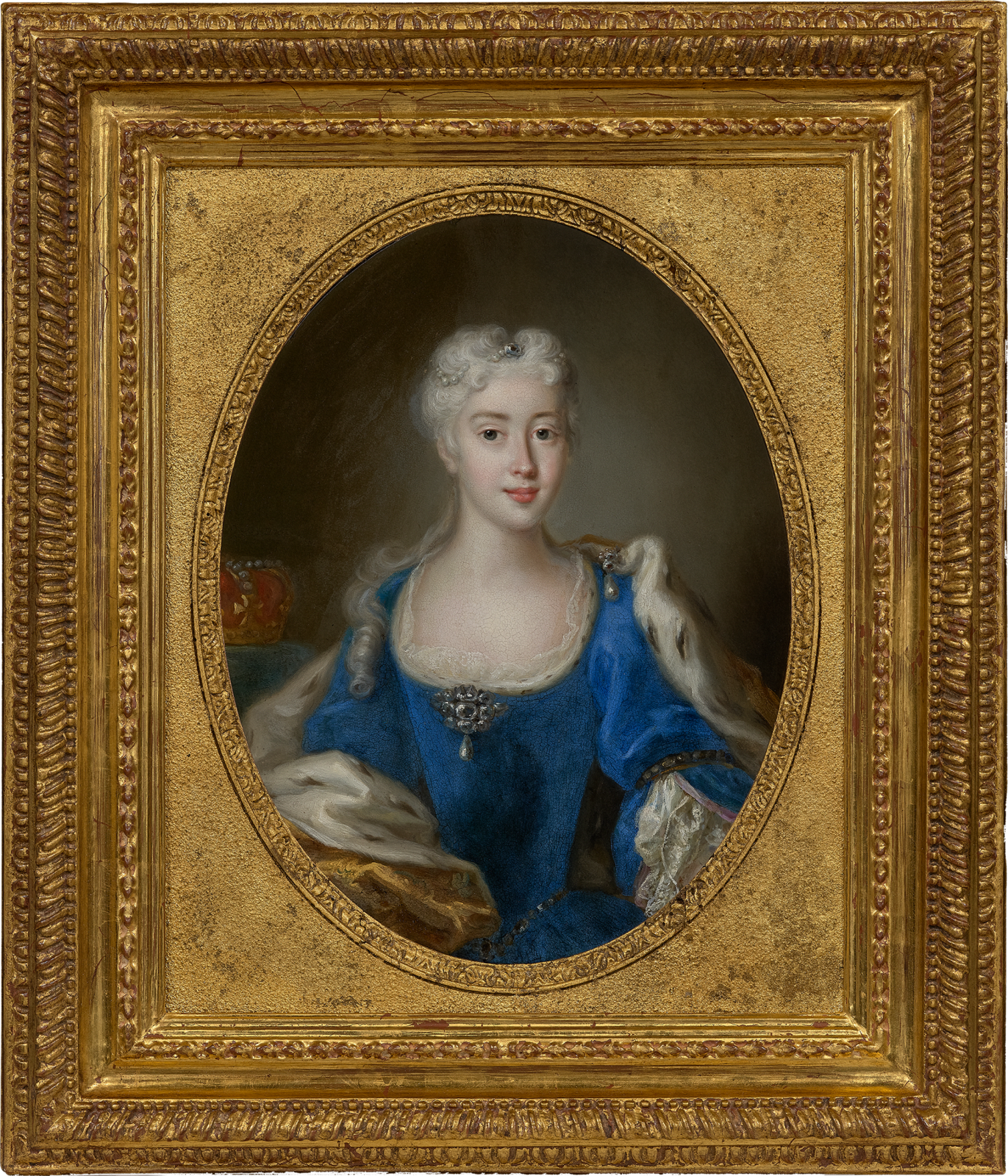
Antonio David
Further images
This exceptionally rare portrait of Maria Clementina Sobieska, wife of the exiled James III and mother of Charles Edward Stuart, was painted in Rome in 1720 by the Jacobite court painter Antonio David. It is dated 1720 in the lower left and was likely one of the ‘10 Pictures’ for which David was paid ten pistoles (166l. 5s. 0d.) by the Stuart court in January of that year.[1] In 1719, David had painted a portrait of Maria for dispatch to England (fig. 1) and the ‘10 Pictures’ were most likely copies and versions of Maria’s likeness to be shared amongst loyal Jacobite supporters at home and abroad. The present work replicates the head-type from the 1719 portrait, yet the composition is quite different and was perhaps amended to better suit its smaller format. Shown in a rich blue dress and an ermine shawl – colours symbolic of the Stuart royal bloodline - and bedecked in pearls and diamonds, Maria is presented as a fresh new face of the Jacobite cause, whilst the crown seen beyond is a reminder of her new objective.
This portrait of Maria was painted less than a year after her marriage to James following a daring escape from imprisonment in Innsbruck. As one of the wealthiest heiresses in Europe, Maria’s marriage to James was intended to bring wealth and prestige to the Stuart cause, but initial attempts at a union in 1718 were thwarted when the Holy Roman Emperor Charles VI intercepted her at Augsburg and had her arrested. After months in captivity, Maria escaped and in the summer of 1719 she and James were married at Montefiascone. Two months later they moved into the Palazzo del Re in Rome which was provided by the Papacy, who acknowledged them as King and Queen of England, Scotland and Ireland. It remained the permanent residence of the exiled Stuart court for the next forty-six years and it was here that Maria and James’ children, Charles Edward (‘Bonnie Prince Charlie’) and Henry Benedict, were born.[2]
The married life of Maria and James proved turbulent and unhappy. Soon after their second child’s birth, Maria left him and went to live at the convent of Santa Cecilia in Trastevere. She accused her husband of adultery and of relying too heavily on particular Protestant supporters – in turn he said it was sinful to leave him and her children. It was more than two years before they were officially reconciled. Although Maria agreed to leave the convent, they led separate lives. Prone to depression and anorexia (unrecognized as such and bound up with her strict and debilitating religious fasts), Maria spent much of her time in prayer. She died at the early age of 32 on 18 January 1735 and was buried in her nun’s habit and interred with full royal honors in St. Peter’s Basilica in Rome. Pope Clement XII ordered that she have a state burial and Pope Benedict XIV commissioned Pietro Bracchi to sculpt a monument to her memory, which was erected in the Basilica.
[1] David was also paid two pistoles (33l. 5s. 0d.) three months later for what is assumed to have been two further works. see Corp, E. 2011. The Stuarts in Italy 1719-1766. Cambridge University Press, p. 101.
[2] For further reading, see Corp, E. 2009. The Jacobites at Urbino: An Exiled Court in Transition.Provenance
Marcello and Carlo Sestieri, Rome, c. 1960s;
Anthony M. Clark (1923-1976);
Robert Simon Fine Art, New York, 2022.
Be the first to hear about our available artworks
* denotes required fields
We will process the personal data you have supplied in accordance with our privacy policy (available on request). You can unsubscribe or change your preferences at any time by clicking the link in our emails.
